Maybe the “top 10 highest mountains in Europe list” has brought you here or you just have a passion for mountain climbing, you have come to the right place. In this article, we have compiled a list of the highest mountains in Europe. While you might expect famous peaks like the Matterhorn to make the cut, you may be surprised to learn that most of the entries are located in the Caucasus Mountains. This vast system of mountain ranges crosses through Russia, Georgia, Azerbaijan, and Armenia and is considered the boundary between Europe and Asia. Among these mountains, Mount Elbrus in the Russian Caucasus is widely recognized as the highest peak in Europe. To add to the complexity, Russia is a transcontinental country, with a significant portion of its landmass belonging to Europe. Similarly, Georgia is seen as a borderland country, with differing opinions on whether it belongs to Asia or Europe. For the purpose of this article, we will recognize the Caucasus Mountains in both Georgia and Russia as part of Europe. As a continent, Europe is renowned for its breathtaking landscapes, rich history, and diverse cultures. It is also home to some of the most formidable and awe-inspiring mountain ranges in the world. For mountaineers, the thrill of conquering these majestic heights is unparalleled. From the snow-covered peaks of the Alps to the rugged cliffs of the Caucasus, Europe offers a wide array of thrilling mountain experiences. So put on your hiking boots and join us as we delve into the top 10 highest mountains in Europe.
 Mount Elbrus is the highest mountain in the Caucasus region and also in all of Europe. Located in former Soviet Union now Russia, near the border with Georgia, Mount Elbrus is a dormant volcano. The last eruption occurred close to two thousand years ago and likely formed the mountain’s summit, which is a dome of lava, with ice and snow covering the surface. At 5642 meters above sea level, Elbrus is often regarded as one of the Seven Summits, which are the highest peaks on each of the seven continents.
Mount Elbrus is the highest mountain in the Caucasus region and also in all of Europe. Located in former Soviet Union now Russia, near the border with Georgia, Mount Elbrus is a dormant volcano. The last eruption occurred close to two thousand years ago and likely formed the mountain’s summit, which is a dome of lava, with ice and snow covering the surface. At 5642 meters above sea level, Elbrus is often regarded as one of the Seven Summits, which are the highest peaks on each of the seven continents.
The term “Caucasian” is perhaps not as well known as it should be, yet it plays an important role in many aspects of our society. The word derives from the Caucasus region, which is situated between the Black Sea and the Caspian Sea. The Caucasus serves as a boundary between Europe and Asia. Here, tectonic activity caused Africa to split and collide with Eurasia, and it is in this mountainous region that the land is forced upwards and the rock is exposed to the surface, providing an opportunity to study the differences between the two continents. In fact, it was studies in the Caucasus region that played an important role in the development of plate tectonic theory, one of the most important theories in the field of geology.
1. Mount Elbrus – 5,642 meters
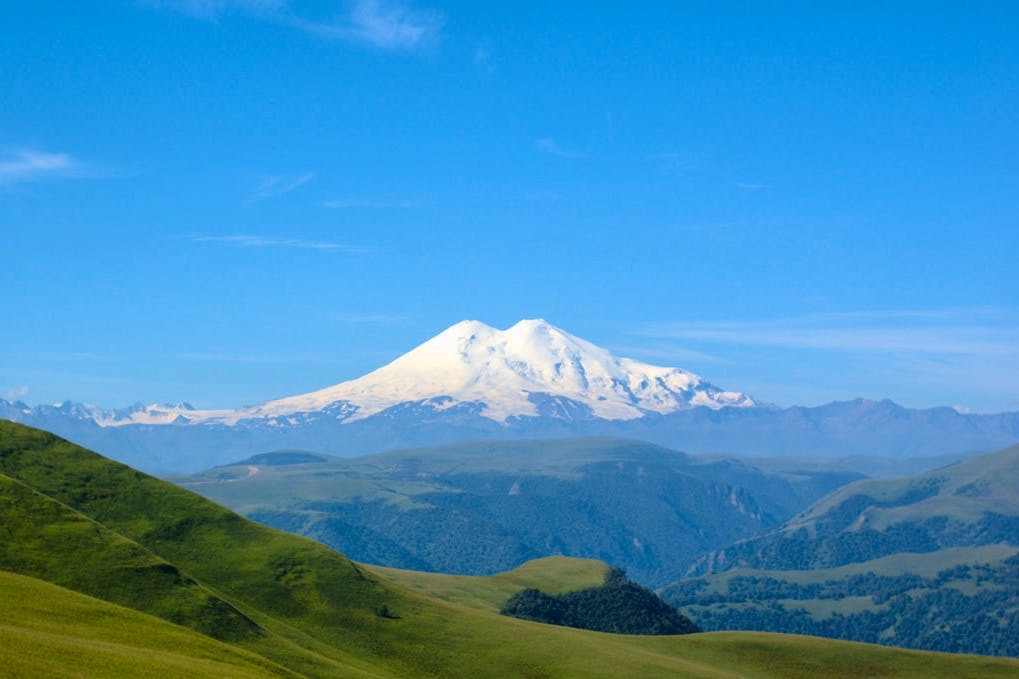
Mount Elbrus, standing at 5,642 meters, is the highest mountain in Europe, situated in the central Caucasus range in Russia. It is also the highest mountain in all of the former Soviet Union. The mountain is situated to the north of the Greater Caucasus range. It is a dormant volcano, having last erupted around 2000 AD. Mt. Elbrus is the highest peak of the volcanic chain, which rises up to 5642 meters between the Black and the Caspian Seas. Therefore, it is the highest mountain in Europe and the 10th most prominent peak in the world. The European route up the mountain starts from the Azau valley on the south side of the mountain. Elbrus is seeing a growth in climbing in recent years, from both experienced mountaineers and tourists who wish to conquer Europe’s highest peak. The standard route, which is attempted by many, is not technical but can be dangerous in poor weather. In 2004, 52 people died attempting to summit Elbrus. In the same year, 8 students from an English school in Richmond, London attempted to climb Mount Elbrus. All were successful, and in the process, they raised £250,000 for a new school hall. The school hall has been built and named the Elbrus Hall, in commemoration of their feat.
2. Dykh-Tau – 5,250 meters
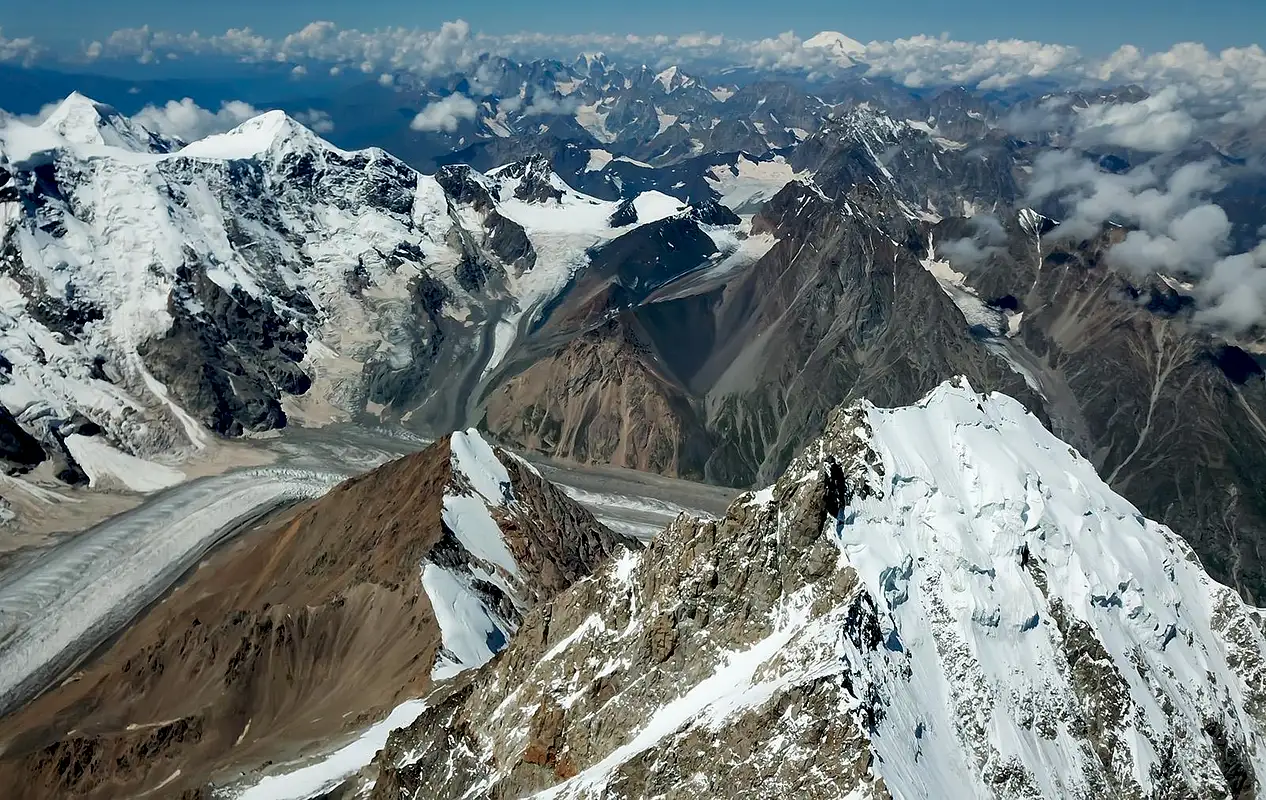 Positioned in the Northern Caucasus, Mount Dykh-Tau is the second-highest mountain in Europe after Mt Elbrus. Dykh-Tau is situated in the Eastern part of the Caucasus Mountain range and is located at the head of the Dykh-Tau Glacier between the two massive rock arms rises above the glacier. Its name means “Devil’s Mountain” in Balkar. Dykh-Tau has a twin peaked summit with its west peak being the higher of the two. This summit was reached by a British expedition in 1888. Between the two peaks there is a large depression where a small lake rests, this lake is actually at a higher altitude than any valley in the Alps. Dykh-Tau’s north and west faces are sheer and receive large amounts of snow and ice. It is the most difficult mountain in the Caucasus due to the severity of its ice and rock faces, members of the British ascent quoted that a route up this would rank to something between the Brenva and Peuterey ice faces on Mont Blanc. It has only seen about 8-9 successful ascents as of August 2006.
Positioned in the Northern Caucasus, Mount Dykh-Tau is the second-highest mountain in Europe after Mt Elbrus. Dykh-Tau is situated in the Eastern part of the Caucasus Mountain range and is located at the head of the Dykh-Tau Glacier between the two massive rock arms rises above the glacier. Its name means “Devil’s Mountain” in Balkar. Dykh-Tau has a twin peaked summit with its west peak being the higher of the two. This summit was reached by a British expedition in 1888. Between the two peaks there is a large depression where a small lake rests, this lake is actually at a higher altitude than any valley in the Alps. Dykh-Tau’s north and west faces are sheer and receive large amounts of snow and ice. It is the most difficult mountain in the Caucasus due to the severity of its ice and rock faces, members of the British ascent quoted that a route up this would rank to something between the Brenva and Peuterey ice faces on Mont Blanc. It has only seen about 8-9 successful ascents as of August 2006.
3. Shkhara – 5,193 meters
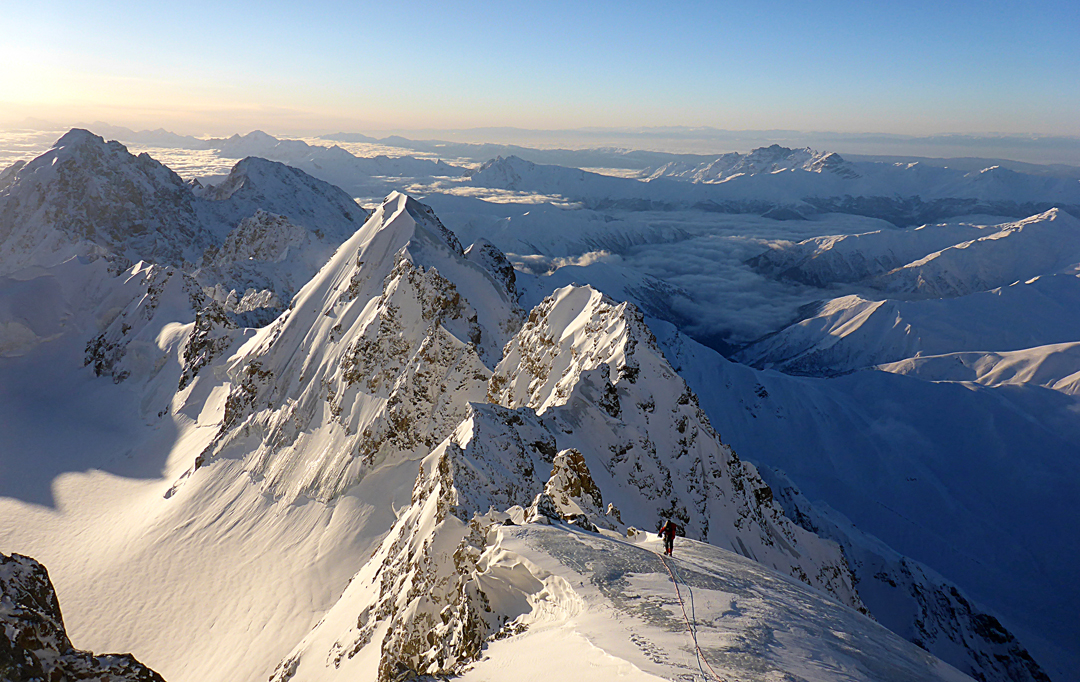
Shkhara is a massive, steep peak in the central Caucasus range and is the high point of the country of Georgia. The name of the peak is of Svaneti origin and is translated as “pinnacle”. Shkhara is the third highest peak in Europe and is the highest point in the nation of Georgia. Although the 5200-meter peaks between Elbrus and Kazbek are quite minor range by Caucasus standards, Shkhara is a far more significant peak than those around it, and it is the major geographic and climbing objective of the area. Shkhara’s North and West faces are almost completely unbroken and are the largest in the Caucasus. The famous Shkhelda Glacier, more than 16 km long, pours off the Russian (North) side of Shkhara. The Bashi Glacier does the same to the South, and both glaciers are more than 1.6 km wide. At the head of the Bashi Glacier is the beautiful Shkhara Glacier, a wild and remote place that is very rarely visited, except by those attempting routes on Shkhara itself. Between the two World Wars, the area around Shkhara was a hotly contested border zone between the Soviet Union and Georgian Republic and was largely closed to foreigners until quite recently. Access to the peak is from Ushguli, at the head of the Enguri River. Ushguli is a remote and ancient village and at the same time one of the highest continuously inhabited settlements in Europe. The village has a tiny airport, and one can also reach Ushguli from Mestia, the council center of Svaneti. Horses can be hired to transport gear to the base of the mountain from Ushguli. Although the various peaks in the Shkhara group have seen a number of ascents in the last few years, Shkhara itself is climbed less than once per year. The standard route is from the Russian side, and although it is not difficult, the major obstacle to reaching the upper mountain is the 2000m deep maze of crevasses on the lower Bashi Glacier.
4. Koshtan-Tau – 5,151 meters
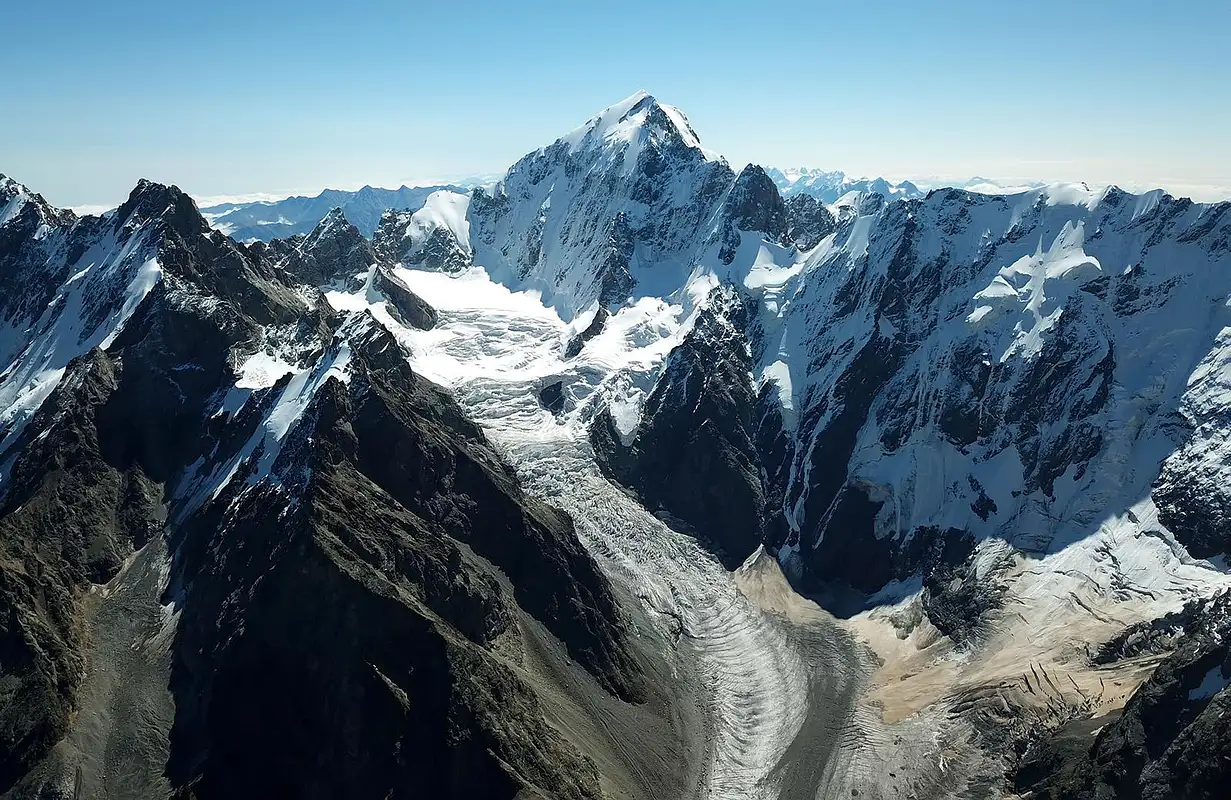 It is said that Koshtan-Tau forms part of a mountain wall which divides the region of Svanetia, in Georgia, from that of the Bezengi region in Kabardino-Balkaria, Russia. The wall extends for quite some distance and is said to remain above the 4,000-meter mark the entire way without dropping below it. Koshtan-Tau itself is a massive and impressive-looking peak which towers above the surrounding area. It has a few summits and is covered in snow and ice. The peak has a certain mystery to it and it is this enigmatic quality which draws climbers to it. Reputedly it has only been successfully scaled on two occasions. The first was in 1988 by B. Trynkus and J. Chalibashvili, who ascended by the south face and the second was an ascent via the NW ridge by an Anglo-American team in 2006. At 5,151 meters, this is certainly one of the most notable summits in the region.
It is said that Koshtan-Tau forms part of a mountain wall which divides the region of Svanetia, in Georgia, from that of the Bezengi region in Kabardino-Balkaria, Russia. The wall extends for quite some distance and is said to remain above the 4,000-meter mark the entire way without dropping below it. Koshtan-Tau itself is a massive and impressive-looking peak which towers above the surrounding area. It has a few summits and is covered in snow and ice. The peak has a certain mystery to it and it is this enigmatic quality which draws climbers to it. Reputedly it has only been successfully scaled on two occasions. The first was in 1988 by B. Trynkus and J. Chalibashvili, who ascended by the south face and the second was an ascent via the NW ridge by an Anglo-American team in 2006. At 5,151 meters, this is certainly one of the most notable summits in the region.
5. Mount Kazbek – 5,054 meters
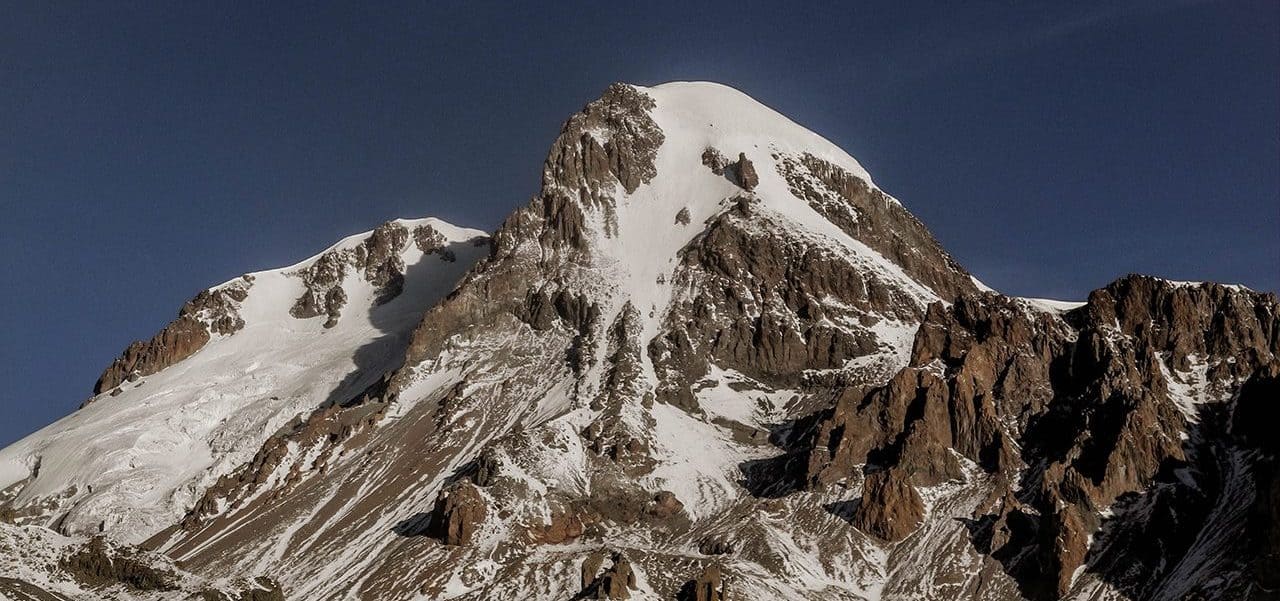 There is also a myth of a gold vein in the mountain that is said to be the cause of many deaths in the 19th and early 20th centuries of people trying to find it. The weather at the mountain is mostly snowy and rainy. The average temperature in January is -10 degrees Celsius, and it is said that in summer the temperature does not rise above 3 degrees Celsius.
There is also a myth of a gold vein in the mountain that is said to be the cause of many deaths in the 19th and early 20th centuries of people trying to find it. The weather at the mountain is mostly snowy and rainy. The average temperature in January is -10 degrees Celsius, and it is said that in summer the temperature does not rise above 3 degrees Celsius.
Mount Kazbek is the highest peak of Eastern Georgia. The mountain lies 42 km to the north of Tbilisi. The mountain is surrounded by myths and legends. Prometheus was chained to the mountain for giving mankind fire, and it is said that he was chained to a cave on the mountainside. It is also said that Zeus defeated the Titans at Mount Kazbek, and that the sleeping Greek Gods are said to lie beneath the mountains in a chamber of ice.
Mount Kazbek stands at 5,054 meters and is the most eastern of the four highest peaks in the Caucasus range. This dormant stratovolcano is located on the border between Georgia and Russia, and it is the second highest peak in Georgia. Kazbek is a large, steep peak and is known for its difficult ascent.
6. Tetnuldi – 4,858 meters
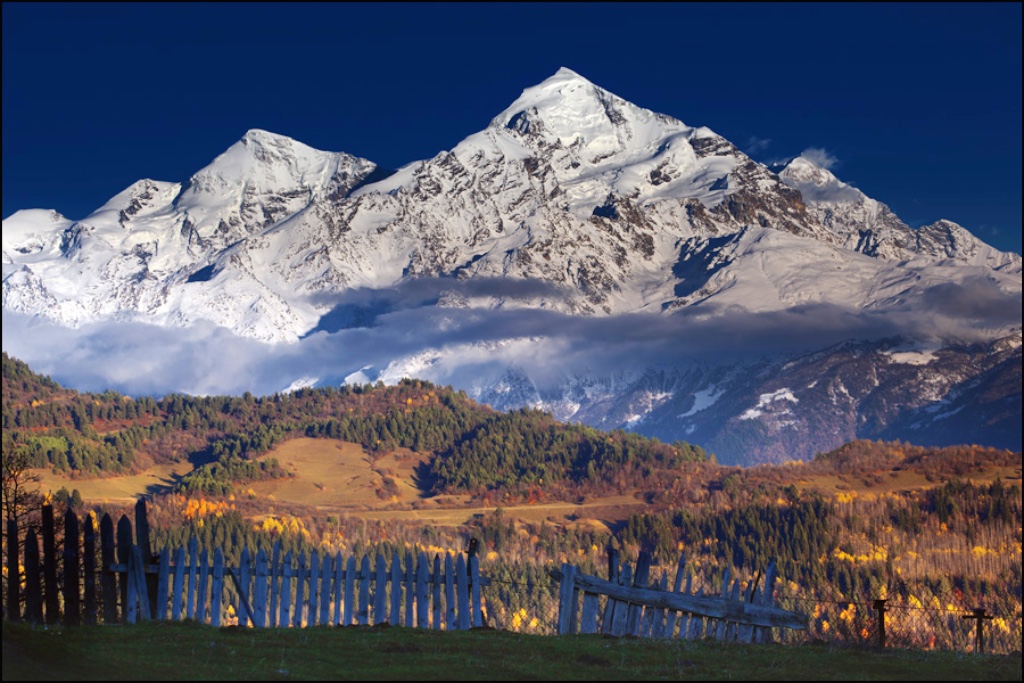
Tetnuldi is a prominent peak in the central part of the Greater Caucasus Mountain Range, located in the Svaneti region of Georgia. It lies to the south of Mount Ushba and has a relatively flat top with several peaks, the highest of which is 4,853 meters above sea level. The area is a popular destination for mountaineers because of the challenges presented by the rocky and glacial terrain. There are a number of routes by which to reach the peaks, with the approach from the Adishi Glacier being the most frequently used. At the top of the Adishi Glacier lies a large crevassed ice-fall from which it is possible to gain access to the North East ridge of Tetnuldi. This area was first explored by a British expedition in 1888, who tried to reach the main peak but failed to reach the final ice plateau. This plateau was first reached by an Austrian expedition in 1939 who climbed to the plateau from the South. The East and North East faces of Tetnuldi offer long and serious routes with few escape options. In 1990, an Italian expedition climbed the North East face and North East ridge but several members of the group were killed in an avalanche during the ascent. The Tetnuldi area has more recently become known for its superb ski touring terrain and in the spring of 2016, a chairlift was constructed in the Adishi valley offering access to the mountain and opening up the area for ski tourists and alpinists.
7. Mont Blanc – 4,805 meters
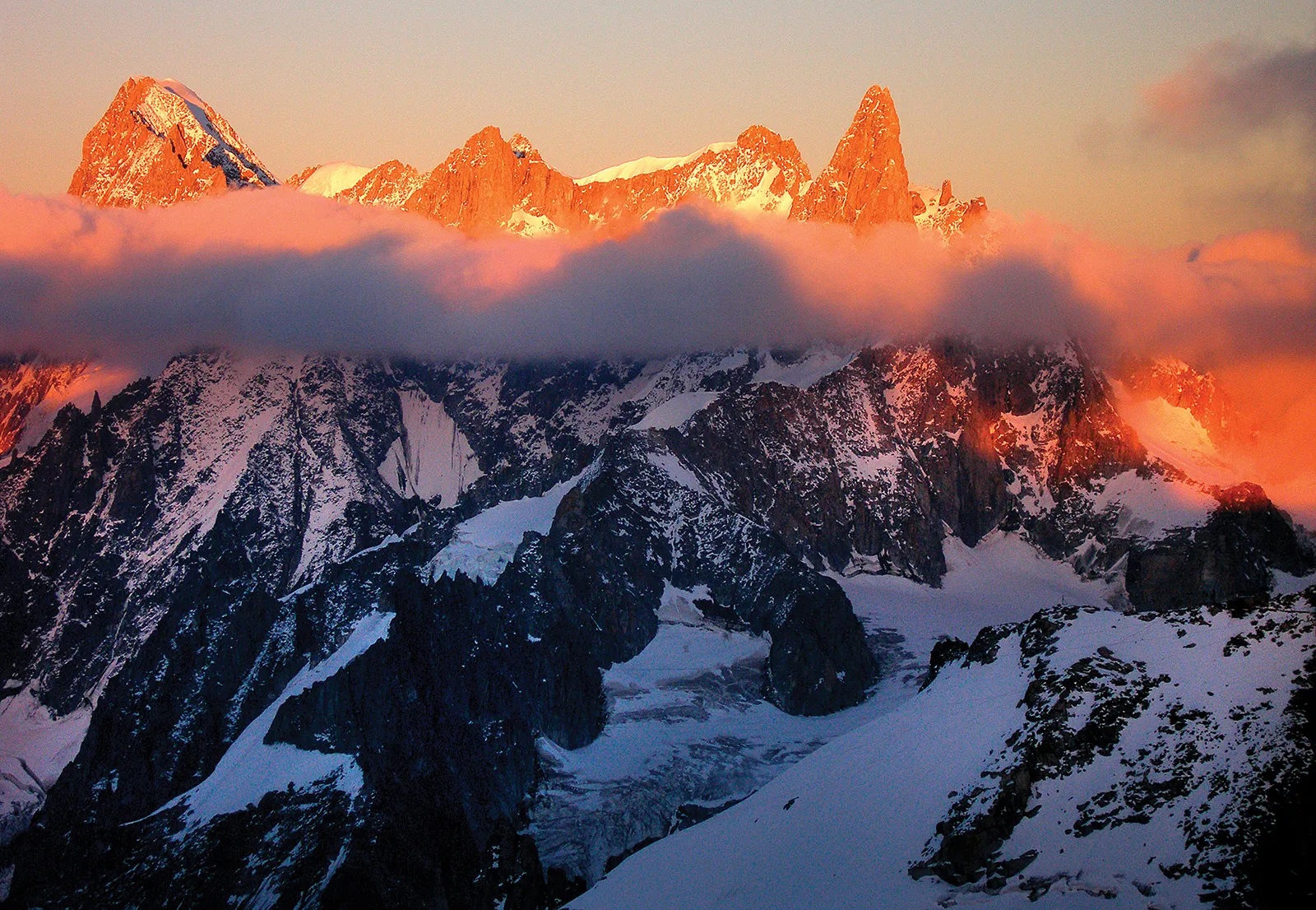 Mont Blanc, known as the “White Mountain,” is the highest peak in the European Alps. Situated in the Graian Alps between the regions of Aosta Valley, Italy, and Savoie and Haute-Savoie, France, the mountain is known to the French as La Dame Blanche (The White Lady) and to the Italians as Monte Bianco (White Mountain). The 4,810 m (15,781 ft) peak is located on the watershed line between the valleys of Ferret and Veny in France and the valleys of Montjoie and Arve in Italy. The Mont Blanc massif is popular for mountaineering, hiking, skiing, and snowboarding. The three towns and their communes that surround Mont Blanc are Courmayeur in Aosta Valley, Italy, and both Saint-Gervais-les-Bains and Chamonix in Haute-Savoie, France. The latter is the mountain’s reputed birthplace, the first time it was climbed in August 1786. Now it is a large tourist center with good transportation links and plenty of hotels and condos.
Mont Blanc, known as the “White Mountain,” is the highest peak in the European Alps. Situated in the Graian Alps between the regions of Aosta Valley, Italy, and Savoie and Haute-Savoie, France, the mountain is known to the French as La Dame Blanche (The White Lady) and to the Italians as Monte Bianco (White Mountain). The 4,810 m (15,781 ft) peak is located on the watershed line between the valleys of Ferret and Veny in France and the valleys of Montjoie and Arve in Italy. The Mont Blanc massif is popular for mountaineering, hiking, skiing, and snowboarding. The three towns and their communes that surround Mont Blanc are Courmayeur in Aosta Valley, Italy, and both Saint-Gervais-les-Bains and Chamonix in Haute-Savoie, France. The latter is the mountain’s reputed birthplace, the first time it was climbed in August 1786. Now it is a large tourist center with good transportation links and plenty of hotels and condos.
8. Mount Dzhimara – 4,780 meters
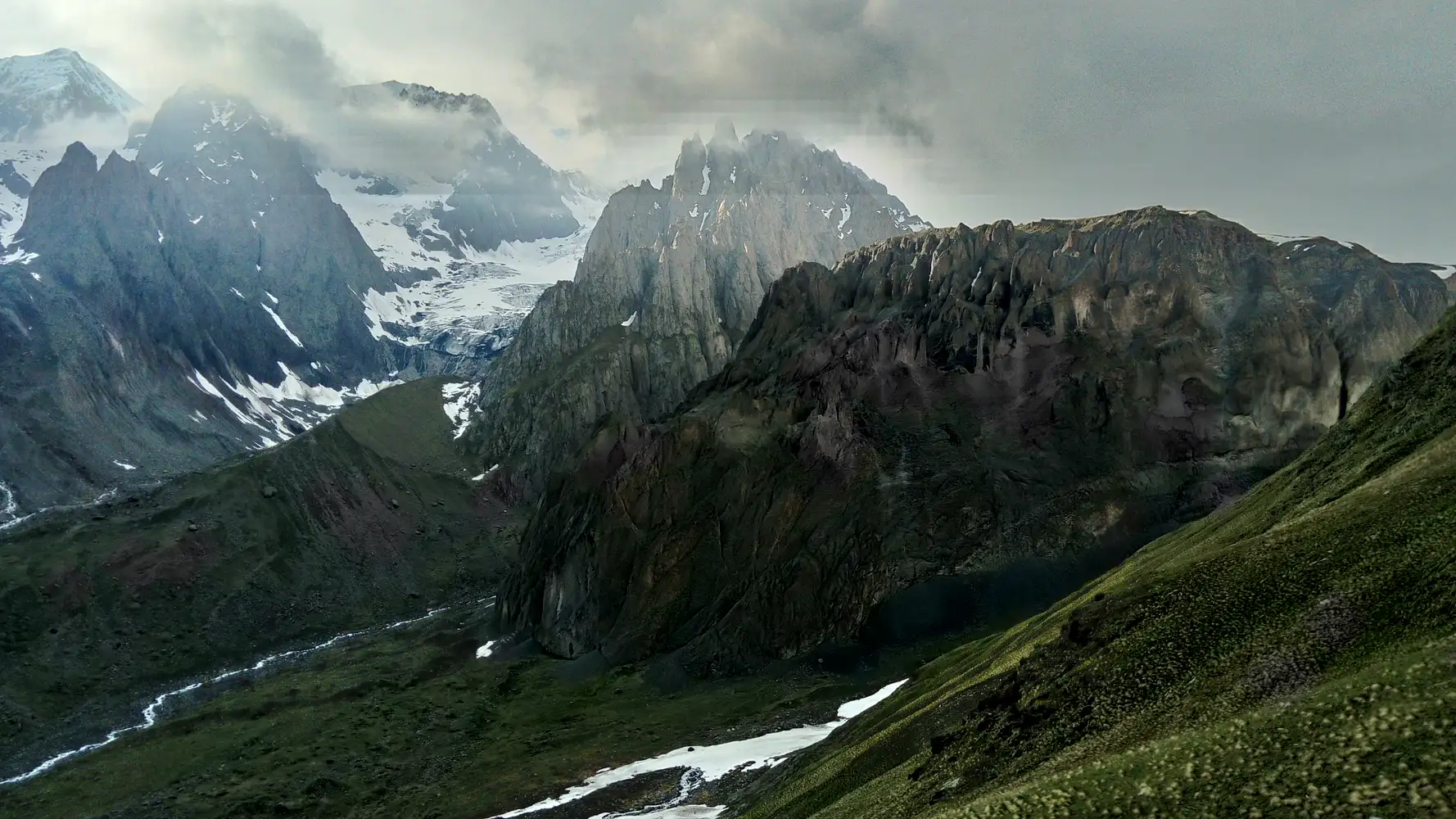 Dzhimara is one of the principal Carachai Mountains. Part of the greater Caucasus range, its summit is the highest point of the Dzhimara Massif, which lies west of the watershed separating the basins of the Kuban and Malka Rivers. Dzhimara lies about 8 km west of the ranking as the 24th highest peak in the greater Caucasus range and the 15th highest independent peak in the Greater Caucasus range. The two glaciers surrounding the mountain are the North Cirque Glacier, 1.2 km in length, situated between the north and west ridges of the mountain, and the smaller South Glacier sitting on the northeastern slope of the mountain. These glaciers are responsible for some of the rivers which are tributaries of the Laba River, which sit at the foot of the mountain range. Due to the retreat of the world’s glaciers, the lower sections of both these glaciers are broken and too dangerous to traverse, and no information is available regarding their current condition. The North Cirque Glacier may pose as a potential route to the summit of Dzhimara.
Dzhimara is one of the principal Carachai Mountains. Part of the greater Caucasus range, its summit is the highest point of the Dzhimara Massif, which lies west of the watershed separating the basins of the Kuban and Malka Rivers. Dzhimara lies about 8 km west of the ranking as the 24th highest peak in the greater Caucasus range and the 15th highest independent peak in the Greater Caucasus range. The two glaciers surrounding the mountain are the North Cirque Glacier, 1.2 km in length, situated between the north and west ridges of the mountain, and the smaller South Glacier sitting on the northeastern slope of the mountain. These glaciers are responsible for some of the rivers which are tributaries of the Laba River, which sit at the foot of the mountain range. Due to the retreat of the world’s glaciers, the lower sections of both these glaciers are broken and too dangerous to traverse, and no information is available regarding their current condition. The North Cirque Glacier may pose as a potential route to the summit of Dzhimara.
9. Mount Ushba – 4,710 meters
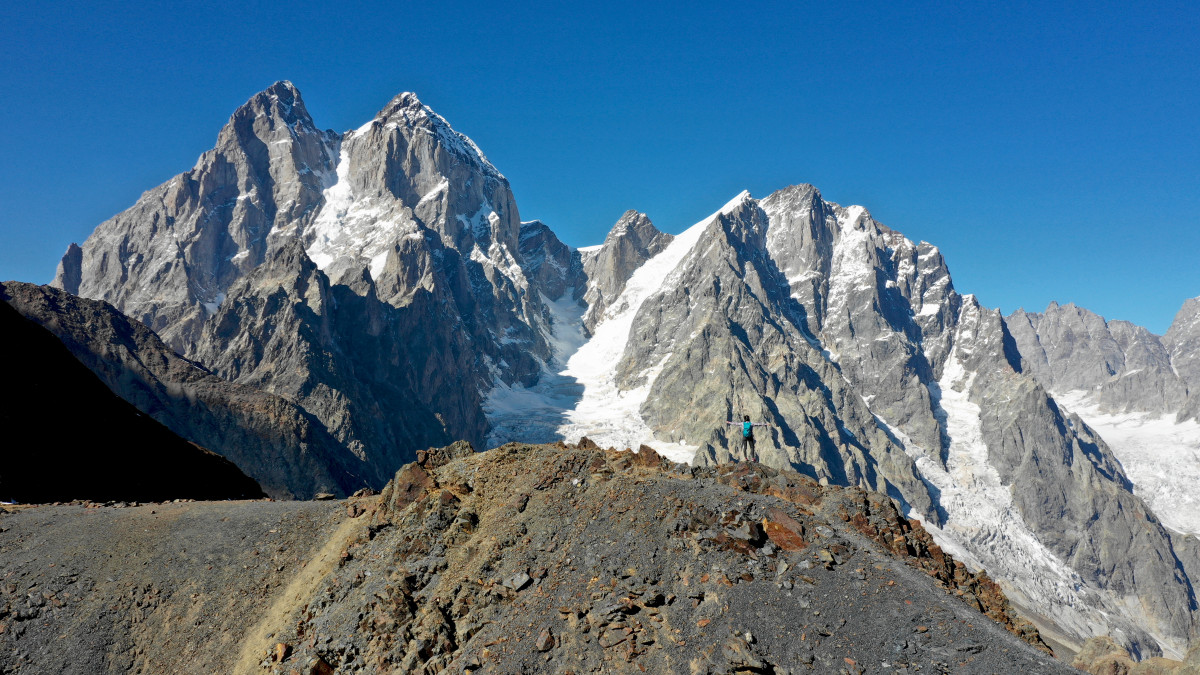 Mount Ushba, although well known amongst mountaineers, is not a frequently visited area. This is unfortunate as the surrounding area is home to many classic climbing and ski touring routes. The area would greatly benefit from the installation of a mountain hut and some form of ‘easy’ access.
Mount Ushba, although well known amongst mountaineers, is not a frequently visited area. This is unfortunate as the surrounding area is home to many classic climbing and ski touring routes. The area would greatly benefit from the installation of a mountain hut and some form of ‘easy’ access.
Ushba is a massive mountain; the whole massif is 12 km long and 2.5 km wide. Two summits are apparent: The higher Ushba (4710 m) and the somewhat lower but more interesting Ushba West (4690 m). Ushba is known as the “Matterhorn of the Caucasus” due to its picturesque, spire-shaped double summit. Although compared to the Matterhorn, Ushba is a much more demanding climb. The north faces of both Ushba and Ushba West are completely different in character, with Ushba West being more technical and a climbing objective. Ushba’s west summit was first climbed in 1903 by a German-Swiss-Austrian expedition. The North routes can have difficult ice and mixed climbing as well as large cornices. The mountain has many routes that are graded from an F (Facile/easy list) to ED (Extremement Difficile/Extremely hard).
10. Monte Rosa – 4,634 meters
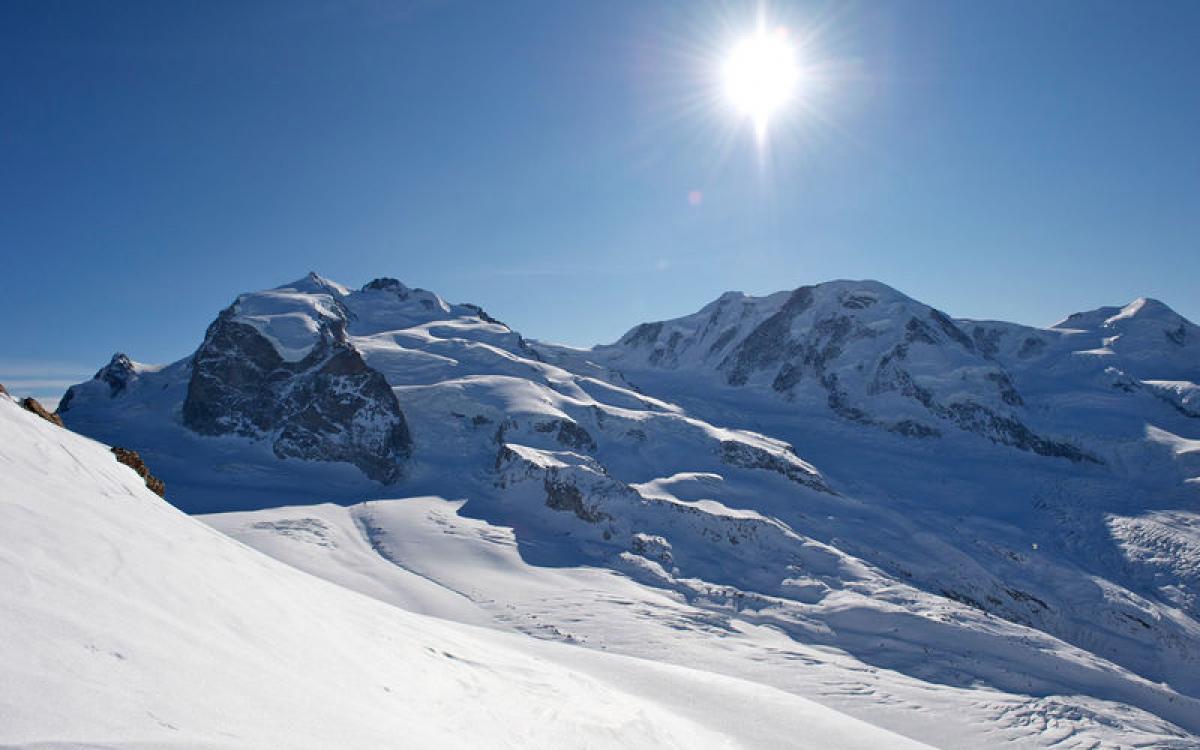 Monte Rosa, the highest mountain in Switzerland, is enveloped by majestic alpine scenery that is truly awe-inspiring. This rugged massif, adorned with glistening snow-capped peaks, boasts four summit points, with the Dufourspitze claiming the title of the loftiest. The name Dufourspitze pays homage to the esteemed surveyor, Guillaume-Henri Dufour. This magnificent mountain has not only captivated the hearts of artists, including the legendary Leonardo da Vinci, but it also holds a storied climbing tradition, with the first recorded ascent documented all the way back in 1778. Multiple routes await daring adventurers seeking to conquer Monte Rosa, with the option to choose from any of its four summit peaks. Additionally, there is the ever-popular ‘Spaghetti Route’, aptly named for its zigzag-like path that ascends several peaks within the massif. Now, speaking of spaghetti, the mountain refuges scattered across Monte Rosa offer delectable hot dinners, ranging from mouth-watering pizzas and pastas to hearty alpine platters. It is worth mentioning that Refugio Gnifetti, in particular, has garnered a well-deserved reputation for its exceptional cuisine!
Monte Rosa, the highest mountain in Switzerland, is enveloped by majestic alpine scenery that is truly awe-inspiring. This rugged massif, adorned with glistening snow-capped peaks, boasts four summit points, with the Dufourspitze claiming the title of the loftiest. The name Dufourspitze pays homage to the esteemed surveyor, Guillaume-Henri Dufour. This magnificent mountain has not only captivated the hearts of artists, including the legendary Leonardo da Vinci, but it also holds a storied climbing tradition, with the first recorded ascent documented all the way back in 1778. Multiple routes await daring adventurers seeking to conquer Monte Rosa, with the option to choose from any of its four summit peaks. Additionally, there is the ever-popular ‘Spaghetti Route’, aptly named for its zigzag-like path that ascends several peaks within the massif. Now, speaking of spaghetti, the mountain refuges scattered across Monte Rosa offer delectable hot dinners, ranging from mouth-watering pizzas and pastas to hearty alpine platters. It is worth mentioning that Refugio Gnifetti, in particular, has garnered a well-deserved reputation for its exceptional cuisine!
How Does Mount Kilimanjaro Compare?
Mount Kilimanjaro may not be among the highest mountains, but its distinct location sets it apart. Situated in Tanzania, it stands alone rather than being part of a range. With a height of 5,895 meters (19,341 feet), conquering Kilimanjaro is a formidable feat that requires acclimatization and physical readiness. While technical climbing skills are not necessary, the climb is physically challenging, and altitude sickness poses a significant obstacle. Despite its lower elevation, Kilimanjaro is still impressive and provides breathtaking views of the African landscape. Each of the top ten peaks in Europe mentioned on this list presents mountaineers with a unique and demanding expedition. From the snowy slopes of Mount Elbrus to the rugged ridges of Ushba, these mountains demand great respect and necessitate proper training, equipment, and prior experience to conquer. Nonetheless, those who rise to the challenge and reach the summit of any of these peaks achieve an extraordinary and unforgettable accomplishment.
How much does it cost to climb Kilimanjaro in € Euros?
Here’s the cost breakdown for climbing Kilimanjaro in euros based on the provided routes and prices:
- Marangu route – 6 days: approximately €1,482
- Machame route – 7 days: approximately €1,737
- Crater Camp route – 9 days: approximately €2,533
- Rongai route – 7 days: approximately €1,645
- Lemosho route – 8 days: approximately €2,044
- Northern Circuit route – 9 days: approximately €2,211
Please note that these conversions are based on the exchange rate at the time of calculation and may vary slightly. Additionally, prices may change depending on various factors such as the tour operator, season, and additional services included. It’s always recommended to check with the tour operator for the most up-to-date pricing information.
![]()

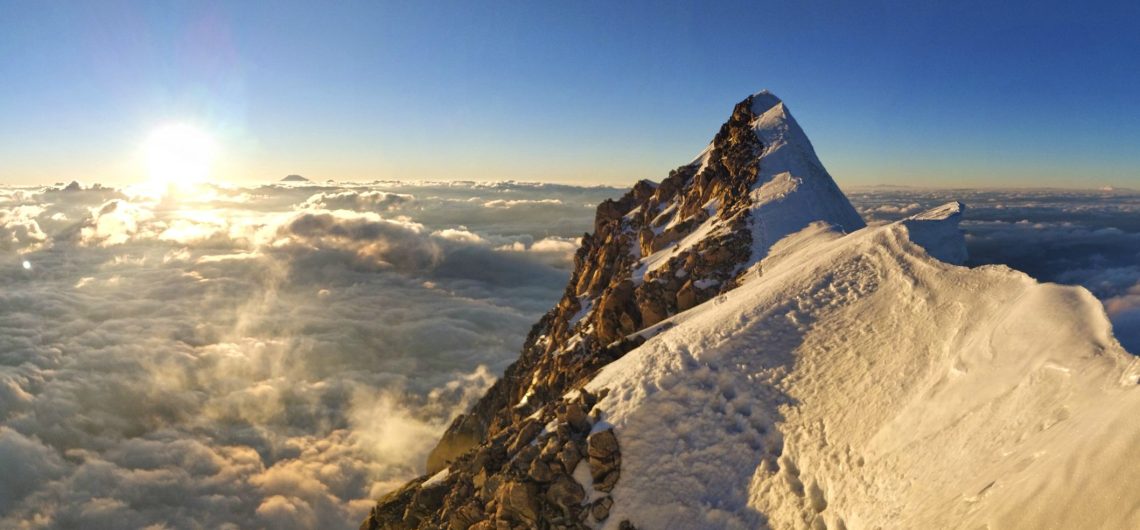
Comments